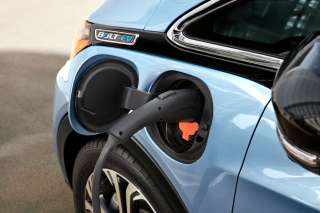You'll Save a Ton of Money Because the Government Is Micromanaging Automakers

You'd think that automakers would find it in their best interest to constantly push for better fuel efficiency with every new model and vehicle update. After all, a car that gets better mileage is worth more to the driver, as it lowers the cost of owning the vehicle—sometimes significantly so.
Yet a few years ago, while gas prices were high and automaker efforts to improve fuel economy were lagging behind what many felt was necessary, the federal government adopted a series of incentives to push for vehicles for drastically better mileage. Known as the CAFE standard (Corporate Average Fuel Economy), the rules set out to lower energy consumption by way of increasing the fuel economy of new cars, with the goal of automakers averaging 54.5 mpg for their fleets by 2025.
In the time since the proposed rules went into effect, gas prices have crashed. As a result, car buyers have increasingly felt that fuel economy is less important. Hence the swift decline in sales for fuel-efficient hybrids like the Toyota Prius and gas sippers like the Ford Fiesta and Honda Fit, and the corresponding surge in purchases of SUVs and trucks (which, it must be noted, have gotten more fuel efficient in the aftermath of the CAFE rules).
The vast decline in gas prices, combined by apparently low demand among consumers for electric cars and the most fuel-efficient vehicles possible, has led some drivers and automakers alike to grumble that perhaps the CAFE rules should be abandoned, or maybe at least scaled back. But there's a reason everyday drivers should embrace the push for higher fuel economy, and it has nothing to do with the environmental considerations of decreasing fossil fuel consumption, worthy though those concerns may be.
Read Next: 10 Fuel-Efficient Cars That Are Likely to See Huge Discounts
According to a new analysis by the Consumers Union, which publishes Consumer Reports, the federal fuel economy standards will wind up saving the average 2025 model vehicle owner $3,200 per car and $4,800 per truck over the course of ownership. Those figures are based on gas prices remaining more or less the same as they are now.
"If gas prices rise from the current, historically low prices, the savings could reach $5,700 per car and $8,200 per truck based on projections," the report explains.
Yes, these projections factor in that vehicles with better fuel economy will cost more upfront to buyers. But even with higher sticker prices, car owners wind up saving a significant amount of money over the long haul.
The savings are even higher than previous estimates, because automakers have been adopting fuel-efficiency tech features quicker than anticipated, and because the costs of this technology are lower than project. Overall, the point is that it's in drivers' interest to support the government's efforts to continue prodding automakers along with increasingly more demanding fuel economy standards.
Read Next: Why the Lamest Car on the Road Has Become a Hot Seller
“Unfortunately, we are seeing some automakers and auto industry trade groups launch an effort to weaken these reasonable and achievable standards,” said Shannon Baker-Branstetter, Energy Policy Counsel for Consumers Union. “Our analysis shows that meeting the standards is not only possible, but doing so means more money in consumers' pockets.”